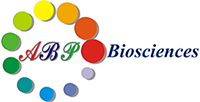Home » Product
iQuant™ 1X dsDNA BR Assay Kit
The iQuant™ 1X dsDNA BR Assay Kit is designed specifically for an easy and accurate quantitation of dsDNA. The kit is highly selective for dsDNA over RNA, and offers advantages in stability, linear dynamic ra...
iQuant™ RiboGreen RNA Assay Kit
The iQuant™ RiboGreen RNA Assay Kit is one of the most sensitive detection kits for quantitation of RNA in solution, with linear fluorescence detection in the range of 1-200 ng of RNA. The iQuant&trad...
SYBR Gold DNA Gel Stain
SYBR Gold DNA Gel Stain is one of the most sensitive fluorescent stains available for detecting nucleic acids in agarose and polyacrylamide gels. The stain gives highly sensitive detection of double-st...
SYBR Green II RNA Gel Stain
SYBR Green II RNA Gel Stain is a sensitive nucleic acid gel stain that has bright fluorescence when bound to RNA and low background in gels, making it ideal for use with either agarose or polyacrylamide gels using la...
SYBR Green I DNA Gel Stain
SYBR Green I DNA Gel Stain is one of the most sensitive fluorescent stains available for detecting nucleic acids in agarose and polyacrylamide gels. SYBR Green I stain is also a very sensitive stain fo...
Andy Fluor 405M-UTP, 1 mM solution
Andy Fluor 405M-UTP (cat. no. C423) is supplied as a 1 mM solution in TE buffer.
Andy Fluor 405M-UTP can be enzymatically incorporated into RNA with T7, T3 and SP6 RNA polymerases, as well as other RNA modifying enzymes....
ER-Track Red (BODIPY TR Glibenclamide)
ER-Track Red dye is cell-permeant, live-cell stain that is highly selective for the endoplasmic reticulum (ER). ER-Track Red dye rarely stains mitochondria, unlike the conventional ER stain DiOC6 (3), and stai...
ER-Track Green (BODIPY FL Glibenclamide)
ER-Track Green dye is cell-permeant, live-cell stain that is highly selective for the endoplasmic reticulum (ER). ER-Track Green dye rarely stains mitochondria, unlike the conventional ER stain DiOC6 (3), and ...
7-AAD (7-Aminoactinomycin D)
7-Aminoactinomycin D (7-AAD) is a membrane-impermeant fluorescent DNA binding dye that is useful for live/dead discrimination and cell cycle analysis by flow cytometry. 7-AAD/DNA complexes can be excited by the 488 nm l...
SYTO 24 Green Nucleic Acid Stain
SYTO 24 Green Nucleic Acid Stain is a cell-permeant nucleic acid stain that shows a large fluorescence enhancement upon binding nucleic acids. The SYTO 24 dye can be used to stain RNA and DNA in both live and...
SYTO 21 Green Nucleic Acid Stain
SYTO 21 Green Nucleic Acid Stain is a cell-permeant nucleic acid stain that shows a large fluorescence enhancement upon binding nucleic acids. The SYTO 21 dye can be used to stain RNA and DNA in both live and...
SYTO 16 Green Nucleic Acid Stain
SYTO 16 Green Nucleic Acid Stain is a cell-permeant nucleic acid stain that shows a large fluorescence enhancement upon binding nucleic acids. The SYTO 16 dye can be used to stain RNA and DNA in both live and...
SYTO 13 Green Nucleic Acid Stain
SYTO 13 Green Nucleic Acid Stain is a cell-permeant nucleic acid stain that shows a large fluorescence enhancement upon binding nucleic acids. The SYTO 13 dye can be used to stain RNA and DNA in both live and...
SYTO 11 Green Nucleic Acid Stain
SYTO 11 Green Nucleic Acid Stain is a cell-permeant nucleic acid stain that shows a large fluorescence enhancement upon binding nucleic acids. The SYTO 11 dye can be used to stain RNA and DNA in both live and...
SYTO 9 Green Nucleic Acid Stain
SYTO 9 Green Nucleic Acid Stain is a cell-permeant nucleic acid stain that shows a large fluorescence enhancement upon binding nucleic acids. The SYTO 9 dye can be used to stain RNA and DNA in both live and d...
BODIPY 630/650 NHS Ester (Succinimidyl Ester)
BODIPY 630/650 dye is bright, far-red fluorescent dye. It has a high extinction coefficient and fluorescence quantum yield and is relatively insensitive to solvent polarity and pH change. BODIPY 630/650 dye...
BODIPY TR NHS Ester (Succinimidyl Ester)
BODIPY TR dye is bright, red fluorescent dye with similar excitation and emission to Texas Red™ or Alexa Fluor™ 594 dye. It has a high extinction coefficient and fluorescence quantum yield and is rel...
BODIPY 581/591 NHS Ester (Succinimidyl Ester)
BODIPY 581/591 dye is bright, red fluorescent dye with similar excitation and emission to Rhodamine Red™ and Alexa Fluor™ 568 dye. It has a high extinction coefficient and fluorescence quantum yield and i...
BODIPY 576/589 NHS Ester (Succinimidyl Ester)
BODIPY 576/589 dye is bright, red fluorescent dye with similar excitation and emission to Rhodamine Red™ and Alexa Fluor™ 568 dye. It has a high extinction coefficient and fluorescence quantum yield and i...
BODIPY 558/568 NHS Ester (Succinimidyl Ester)
BODIPY 558/568 dye is bright, red fluorescent dye. It has a high extinction coefficient and fluorescence quantum yield and is relatively insensitive to solvent polarity and pH change. BODIPY 558/568 dye has a re...
BODIPY FL NHS Ester (Succinimidyl Ester)
BODIPY FL dye is bright, green fluorescent dye with similar excitation and emission to fluorescein (FITC) or Alexa Fluor™ 488 dye. It has a high extinction coefficient and fluorescence quantum yield and is rela...
Dextran, Amino, 10,000 MW
Dextran conjugates are hydrophilic polysaccharides most commonly used in microscopy studies to monitor cell division, track the movement of live cells, and to report the hydrodynamic properties of the cytoplasmic matrix. The...
Dextran, ROX, 10,000 MW, Fixable
Dextran conjugates are hydrophilic polysaccharides most commonly used in microscopy studies to monitor cell division, track the movement of live cells, and to report the hydrodynamic properties of the cytoplasmic matrix. The...
Dextran, Tetramethylrhodamine, 10,000 MW, Fixable
Dextran conjugates are hydrophilic polysaccharides most commonly used in microscopy studies to monitor cell division, track the movement of live cells, and to report the hydrodynamic properties of the cytoplasmic matrix. The...
Dextran, Oregon Green 488, 10,000 MW, Fixable
Dextran conjugates are hydrophilic polysaccharides most commonly used in microscopy studies to monitor cell division, track the movement of live cells, and to report the hydrodynamic properties of the cytoplasmic matrix. The...
Dextran, Fluorescein, 10,000 MW, Fixable
Dextran conjugates are hydrophilic polysaccharides most commonly used in microscopy studies to monitor cell division, track the movement of live cells, and to report the hydrodynamic properties of the cytoplasmic matrix. The...
Dextran Conjugates
Dextran conjugates are hydrophilic polysaccharides with low toxicity that can used for tissue sections, in vivo neurons, and cultured cells. ABP Biosciences offers a wide range of fluorescent dextran conjugate...
SYPRO Ruby Protein Gel Stain
SYPRO Ruby Protein Gel Stain is a ready-to-use, ultrasensitive, luminescent stain for the detection of proteins separated by polyacrylamide gel electrophoresis (PAGE). SYPRO Ruby stain is ideal for use in 1-D and 2-D PAGE. T...
Lipid Peroxidation Kit
Lipid peroxidation is the oxidative degradation of cellular lipids by free radicals from reactive oxygen species, which can degrade lipids containing carbon-carbon double bonds such as phospholipids and polyunsaturated fatty...
BODIPY™ 581/591 C11 (Lipid Peroxidation Sensor)
BODIPY™ 581/591 C11 (Lipid Peroxidation Sensor) is a sensitive fluorescent probe for lipid peroxidation assays that localizes to membranes in live cells. Oxidation of the polyunsaturated butadienyl portion of this...
GolgiTrack™ Red
GolgiTrack™ Red is a cell-permeable, non-fixable, red-fluorescent dye that selectively stains Golgi apparatus in live cells. This dye has an excitation and emission maximum of 582/592 nm and can be efficientl...
GolgiTrack™ Green
GolgiTrack™ Green is a cell-permeable, non-fixable, green-fluorescent dye that selectively stains Golgi apparatus in live cells. This dye has an excitation and emission maximum of 505/512 nm and can be effici...
LysoTrack™ Red
LysoTrack™ Red is a cell-permeable, non-fixable, red-fluorescent dye that selectively stains lysosomes in live cells. This dye has an excitation and emission maximum of 582/592 nm and can be efficiently excit...
LysoTrack™ Green
LysoTrack™ Green (Known as LysoTracker™ Green DND-26, Trade Mark of ThermoFisher Scientific) is a cell-permeable, non-fixable, green-fluorescent dye that selectively stains lysosomes in live cells. This...
MycoCheck™ Mycoplasma Luminescent Detection Kit
Mycoplasma infections are relatively common in laboratory cell cultures; it has been estimated that between 5% and 35% of all cell cultures are infected. Mycoplasma are the smallest and simplest prokaryotes. Mycoplas...
5-Ethynyl-dUTP (5-EdUTP)
5-Ethynyl-dUTP (5-EdUTP) (cat. no. C432) is supplied as a 1 mM solution in TE buffer.
5-EdUTP can be enzymatically incorporated into DNA with Reverse Transcriptases, Taq DNA Polymerase, phi29 DNA Polymerase, Klenow Fragm...
Transfection Grade PEI (MW 40,000)
The transfection grade polyethylenimine (PEI) is a powerful, trusted, and cost-effective reagent widely considered as a current gold standard for both in vitro and in vivo transfection. PEI h...
Polyethylenimine Hydrochloride, Linear (MW 5,500)
Polyethylenimine (PEI) is a synthetic cationic polymer with high charge density and chain flexibility. It is the most widely investigated cationic polymer for non-viral delivery of nucleic acids. Linear PEI can be an effe...
Cy7 DBCO
Click chemistry describes a class of chemical reactions that use bio-orthogonal or biologically unique moieties to label and detect a molecule of interest in mild, aqueous conditions. DBCO alkynes can be used to perform clic...
Oregon Green 488 DBCO
Click chemistry describes a class of chemical reactions that use bio-orthogonal or biologically unique moieties to label and detect a molecule of interest in mild, aqueous conditions. DBCO alkynes can be used to perform clic...
D-Luciferin, sodium salt
Luciferins are a class of ATP-dependent substrates that are oxidized in the presence of the enzyme luciferase to produce oxyluciferin and energy in the form of light. Luciferin undergoes an enzyme-catalysed oxidation and ...
D-Luciferin, potassium salt
Luciferins are a class of ATP-dependent substrates that are oxidized in the presence of the enzyme luciferase to produce oxyluciferin and energy in the form of light. Luciferin undergoes an enzyme-catalysed oxidation and ...
MitoTrack™ Deep Red FM
MitoTrack™ Deep Red FM (Known as MitoTracker® Deep Red FM, Trade Mark of ThermoFisher Scientific) is a Near IR-fluorescent dye that stains mitochondria in live cells and its accumulation is dependent upon...
MitoTrack™ Red FM
MitoTrack™ Red FM (Known as MitoTracker® Red FM, Trade Mark of ThermoFisher Scientific) is an red-fluorescent dye that stains mitochondria in live cells and its accumulation is dependent upon membrane potentia...
MitoTrack™ Green FM
MitoTrack™ Green FM (Known as MitoTracker® Green FM, Trade Mark of ThermoFisher Scientific) is an green-fluorescent dye that stains mitochondria in live cells and its accumulation is dependent upon membrane potenti...
JC-9 Dye
JC-9 Dye is a mitochondrial dye that stains mitochondria in living cells in a membrane potential-dependent fashion. JC-9 exists as a monomer at low concentrations and yields green fluorescence, similar to fluorescein. A...
Andy Fluor 647 Tyramide
Andy Fluor 647 Tyramide is used in tyramide signal amplification (TSA), a method for high-density labeling of a target protein or nucleic acid in situ. This reagent can be used with any antibody conjugated to HRP for tyramid...
Andy Fluor 594 Tyramide
Andy Fluor 594 Tyramide is used in tyramide signal amplification (TSA), a method for high-density labeling of a target protein or nucleic acid in situ. This reagent can be used with any antibody conjugated to HRP for tyramid...
Andy Fluor 555 Tyramide
Andy Fluor 555 Tyramide is used in tyramide signal amplification (TSA), a method for high-density labeling of a target protein or nucleic acid in situ. This reagent can be used with any antibody conjugated to HRP for tyramid...
Andy Fluor 488 Tyramide
Andy Fluor 488 Tyramide is used in tyramide signal amplification (TSA), a method for high-density labeling of a target protein or nucleic acid in situ. This reagent can be used with any antibody conjugated to HRP for tyramid...
Contact Us
ABP Biosciences
405 E Gude Dr, STE 214
Rockville, MD 20850
Service Hotline
Tel: 301-658-7993
E-mail: info@abpbio.com
Copyright@ 2024 ABP Biosciences, LLC. All Rights Reserved.

